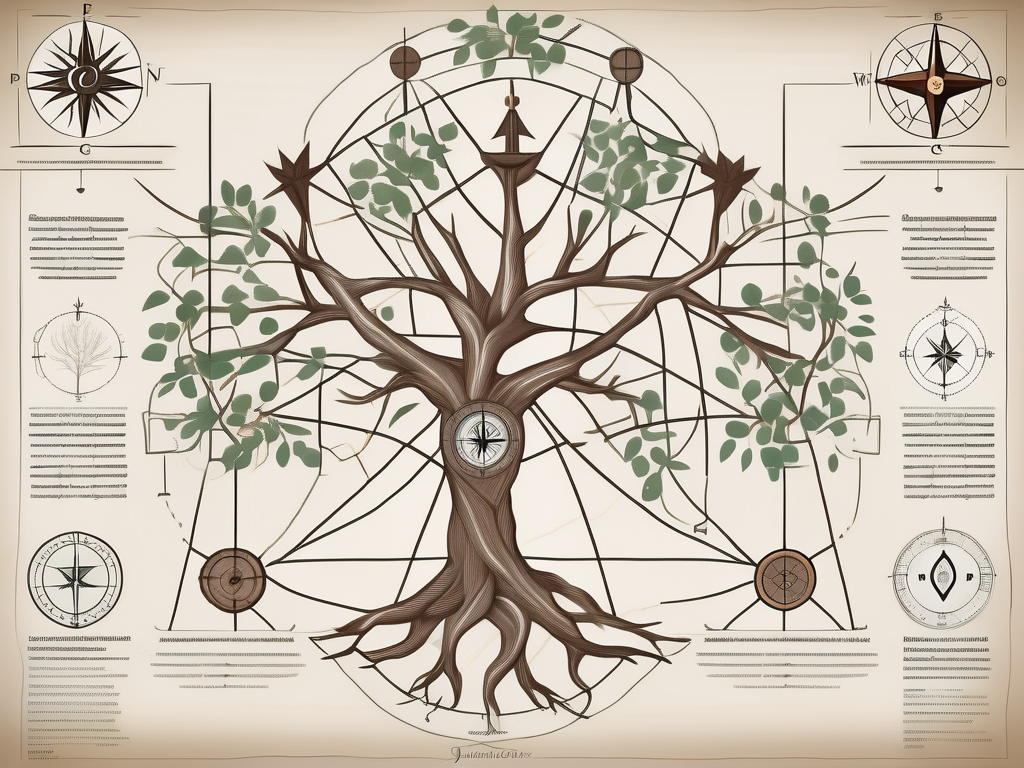In a world filled with different beliefs and religions, one name that holds great significance is Jesus Christ. Whether you are a devout Christian, a curious scholar, or simply someone seeking to understand the figure who has shaped history, it is essential to explore the identity and teachings of Jesus Christ. This article aims to provide a comprehensive explanation of who Jesus Christ is and what he represents.
Understanding the Identity of Jesus Christ
Before delving into the teachings and miracles associated with Jesus, it is crucial to first understand his identity. Who was Jesus Christ? Historically, there are records that validate his existence and shed light on his life. Jesus was born in Bethlehem to Mary and Joseph, and his birth is celebrated as Christmas by millions worldwide.
Jesus’ birth in Bethlehem holds great significance, as it fulfills ancient prophecies and marks the beginning of a new era. The town of Bethlehem, nestled in the hills of Judea, was a humble and unassuming place. It was in this small town that the Son of God chose to enter the world, in a humble stable, surrounded by animals. The birth of Jesus, announced by a host of angels to shepherds in the fields, was a moment of divine intervention and a testament to the extraordinary nature of his identity.
The Historical Jesus: Facts and Records
Aside from religious scriptures, such as the Bible, numerous historical writings mention Jesus Christ. The works of Flavius Josephus, a Jewish historian, and Tacitus, a Roman historian, provide valuable insights into his life and the impact he had on society. These accounts, combined with archaeological evidence, solidify the existence of Jesus as a historical figure.
Flavius Josephus, in his book Antiquities of the Jews, mentions Jesus and his followers, describing him as a wise man who performed miraculous deeds. Tacitus, in his Annals, refers to Jesus as the founder of a new religious movement and the one who suffered under Pontius Pilate. These historical records not only affirm Jesus’ existence but also shed light on the significant influence he had during his time on Earth.
Jesus in Christianity: The Son of God
For Christians, Jesus is more than just a historical figure. He is believed to be the Son of God, the savior of humanity. According to Christian theology, Jesus was sent by God to redeem mankind from sin and offer the gift of eternal life. His teachings and actions exemplified love, compassion, and forgiveness, serving as a guide on how to lead a meaningful and purposeful life.
Jesus’ identity as the Son of God is central to Christian faith. It is through his sacrifice on the cross and subsequent resurrection that believers find salvation and hope. The life of Jesus, as depicted in the Gospels, is filled with profound teachings, parables, and miracles that continue to inspire and guide Christians in their daily lives.
Jesus in Islam: A Prophet’s Perspective
While Christianity holds Jesus as divine, Islam sees him as a revered prophet. In Islam, Jesus is known as Isa al-Masih and is considered one of the greatest messengers of Allah. The Quran mentions his miraculous birth, his teachings, and even his second coming. Understanding Jesus’ role in Islam provides a broader perspective on his significance beyond the confines of a single faith.
In Islamic tradition, Jesus is highly respected and revered. He is regarded as a prophet who brought the message of monotheism and righteousness to his people. The Quran portrays Jesus as a miracle worker, healing the sick, raising the dead, and performing other extraordinary acts by the will of Allah. His teachings emphasize the importance of compassion, justice, and submission to the will of God.
While there are theological differences between Christianity and Islam regarding the nature of Jesus, both faiths recognize his profound impact on humanity. The figure of Jesus serves as a bridge between these two major world religions, fostering dialogue and understanding.
The Teachings of Jesus Christ
Jesus’ teachings continue to resonate with people across cultures and time. One of the most well-known and impactful sermons delivered by Jesus is the Sermon on the Mount.
The Sermon on the Mount, found in the Gospel of Matthew, is a collection of teachings delivered by Jesus to his disciples and a large crowd of people. It is considered one of the most important sermons in Christian history, as it encapsulates the core principles of Jesus’ teachings.
In this sermon, Jesus shared profound teachings that emphasized humility, love, and forgiveness. He taught his followers the importance of inner purity, the power of prayer, and the blessings that come from having a pure heart. The Beatitudes, a series of blessings proclaimed by Jesus, provide a roadmap for living a righteous and fulfilling life.
Jesus’ teachings in the Sermon on the Mount challenged societal norms and called for a radical transformation of the heart. He taught that true happiness and fulfillment come from living in accordance with God’s will and treating others with love and compassion.
The Sermon on the Mount: Core Messages
The Sermon on the Mount contains several core messages that have had a profound impact on individuals throughout history. Jesus taught the importance of humility, urging his followers to recognize their own spiritual poverty and dependence on God. He emphasized the value of meekness, encouraging his disciples to be gentle and humble in their interactions with others.
Furthermore, Jesus spoke about the power of forgiveness and the need to reconcile with others. He taught that harboring anger and resentment only hinders personal growth and prevents the establishment of healthy relationships. Instead, Jesus emphasized the power of forgiveness to restore relationships and bring about inner peace.
Another key message in the Sermon on the Mount is the call to love one’s enemies. Jesus challenged his followers to extend love and compassion not only to their friends and family but also to those who may oppose or mistreat them. This radical teaching revolutionized the concept of love and expanded its boundaries beyond conventional limits.
Parables and Their Meanings
Jesus used parables, simple stories with profound meanings, to teach moral and spiritual lessons. These parables, such as the Good Samaritan and the Prodigal Son, illustrate key principles like compassion, forgiveness, and humility. Through these stories, Jesus conveyed deep truths in a relatable and accessible manner.
The parable of the Good Samaritan, for example, teaches the importance of showing compassion and mercy to those in need, regardless of social or cultural differences. It challenges individuals to break down barriers and extend help to others, even when it may be inconvenient or uncomfortable.
The parable of the Prodigal Son, on the other hand, highlights the themes of forgiveness and redemption. It portrays the unconditional love of a father who welcomes back his wayward son with open arms, symbolizing God’s boundless mercy and forgiveness towards humanity.
The timeless wisdom found in these parables continues to inspire and guide individuals in their daily lives. They serve as reminders of the transformative power of love, forgiveness, and compassion.
Jesus’ Teachings on Love and Forgiveness
Central to Jesus’ teachings is the message of love and forgiveness. He urged his followers to love not only their friends and family but also their enemies. Jesus taught that love is not merely an emotion but an action, requiring individuals to actively demonstrate care and compassion towards others.
Jesus emphasized the importance of forgiveness as a means of healing and personal growth. He taught that forgiveness is not only beneficial for the one who is forgiven but also for the one who forgives. By letting go of anger and resentment, individuals can experience freedom and inner peace.
Furthermore, Jesus taught that forgiveness is not a one-time event but an ongoing process. He encouraged his disciples to forgive others repeatedly, just as God forgives them unconditionally. This teaching emphasizes the transformative power of forgiveness in restoring broken relationships and fostering reconciliation.
Jesus’ teachings on love and forgiveness continue to challenge and inspire individuals today. They serve as a reminder of the radical love and grace that God extends to all people, inviting them to embody these qualities in their own lives.
The Miracles of Jesus Christ
Aside from his teachings, Jesus is renowned for performing miracles that demonstrated his divine power and compassion.
Jesus’ miracles were not only acts of supernatural power, but also profound displays of love and mercy. Each miracle served a purpose, revealing a different aspect of Jesus’ character and his mission on earth.
Healing Miracles: Sight to the Blind and Health to the Sick
Jesus performed miraculous healings, restoring sight to the blind, enabling the lame to walk, and curing various diseases. These acts of compassion and restoration exhibit Jesus’ empathy towards those suffering and his desire to bring physical and spiritual healing to humanity.
Imagine the joy and wonder that filled the hearts of those who were blind and could suddenly see the vibrant colors of the world around them. The blind beggar, who had spent his days in darkness, was now able to witness the beauty of nature and the faces of his loved ones. The sick, who had been bedridden and in pain, were now able to rise and walk, experiencing the freedom and joy of mobility.
Through these healing miracles, Jesus not only provided immediate relief but also offered a glimpse of the eternal healing that comes through faith in him. The physical healing was a tangible representation of the spiritual healing that Jesus offers to all who believe in him.
Nature Miracles: Walking on Water and Calming the Storm
Jesus’ power extended beyond healing. He displayed authority over nature, walking on water and calming storms, showcasing his dominion over the elements. These miracles served as visual reminders of his divine nature and ability to transcend the natural order.
Imagine the disciples’ astonishment as they witnessed Jesus walking on the stormy sea. The wind howled, the waves crashed, and yet Jesus remained calm and in control. His ability to walk on water defied the laws of physics, revealing his divine power and authority.
Similarly, when Jesus calmed the raging storm, he not only demonstrated his power over nature but also provided a powerful metaphor for the storms of life that we all face. Just as he brought peace to the physical storm, Jesus offers peace and comfort in the midst of life’s trials and tribulations.
Resurrection Miracles: Lazarus and Jesus Himself
One of the most significant miracles associated with Jesus is the resurrection. Jesus brought Lazarus back to life, offering hope and triumph over death. Ultimately, Jesus conquered death himself through his own resurrection, leading to the foundation of the Christian faith and the promise of eternal life.
Imagine the awe and wonder that filled the hearts of those who witnessed Lazarus being raised from the dead. The mourners’ grief turned to joy as Lazarus emerged from the tomb, restored to life by Jesus’ command. This miracle not only brought comfort to Lazarus and his loved ones but also served as a powerful testament to Jesus’ power over death.
Jesus’ own resurrection was the ultimate miracle, proving his divinity and fulfilling the prophecies of the Old Testament. Through his resurrection, Jesus conquered sin and death, offering forgiveness and eternal life to all who believe in him.
The miracles of Jesus are not merely historical events; they are powerful reminders of his love, compassion, and power. They invite us to have faith in him, to trust in his ability to bring healing, peace, and eternal life. May we be inspired by these miracles and seek to follow Jesus, the one who performs miracles both in the past and in our lives today.
The Crucifixion and Resurrection of Jesus Christ
The culmination of Jesus’ life and mission is found in the accounts of his crucifixion and resurrection.
The Last Supper: Symbolism and Significance
The Last Supper, a symbolic meal shared by Jesus and his disciples, holds immense significance. During this final gathering, Jesus instituted the sacrament of communion, representing his body and blood. This act of sharing bread and wine continues to be a central ritual in Christian worship.
The Crucifixion: A Sacrifice for Humanity
Jesus’ crucifixion, a form of execution during Roman times, was a pivotal moment in his life and in human history. Christians believe that Jesus willingly sacrificed his life as a symbolic atonement for the sins of all humanity, exemplifying the ultimate act of selflessness and love.
The Resurrection: Victory Over Death
The resurrection is the cornerstone of the Christian faith. According to the Gospels, Jesus rose from the dead three days after his crucifixion. This triumphant event not only affirms Jesus’ divinity but also signifies victory over death itself, offering hope and the promise of eternal life to all who believe.
Understanding Jesus Christ goes beyond mere historical or religious importance. It is an exploration of humanity’s search for meaning, love, and redemption. Whether you approach Jesus from a Christian or academic perspective, his teachings and miraculous acts continue to inspire millions around the world. By delving into the identity and significance of Jesus Christ, we gain a deeper appreciation for the impact he has had on individuals, societies, and the course of human history.












